Pentium M on your Socket 478 platform: Part 2
Trying to figure out the BIOS
It is clear that ASUS has to customize BIOS’s found on current socket 478 boards to support these new socket 479 Pentium M processors. One of the biggest complaints of the overclocking/enthusiast community has been on the lack of voltage options, dividers, and memory timings on previous Intel 855GM boards such as the ones by DFI and AOpen. With high hopes of ASUS desktop board Frequency/Voltage settings we took dove into the BIOS. What we found was to be expected for a “first ever” hardware product.
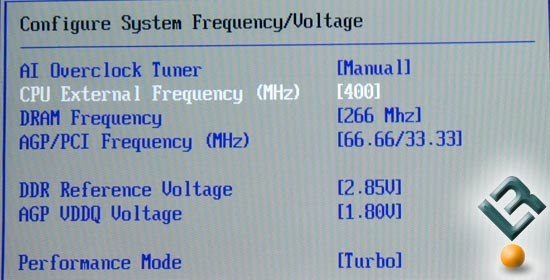
Going to the screen that every enthusiast and overclocker goes to first we looked at the system frequency/voltage menu and found some positives and negatives at the same time. The ASUS P4P800SE BIOS allows you to crank the External Frequency all the way up to 400MHz, which is overkill for any current Pentium M on the market no matter what cooling is being used. The AGP/PCI bus can be locked down to 66/33 for better overclocking attempts. Anyone using the DFI 855GME-MGF knows they lack any vDIMM and vAGP settings, but that is not the case here as the vDIMM goes up to 2.85V and the vAGP tops out at 1.80V. All in all it’s not too bad till you think about what is missing.
Take another look above and see if you can figure it out… Oh yes, what about the multiplier and vCore settings for the processor. Sadly even though the Pentium M is an unlocked (by Intel) processor ASUS fails to place multiplier adjustments in the BIOS. Also there are no settings for the vCore on the processor. You are basically stuck with whatever setting is pre-programmed for the CPU you are using. In the case of out Intel 770 processor we were stuck running 1.36V.
UPDATE: A few hours after posting our article ASUS-USA delivered a Beta BIOS to us. They have filled every overclockers dreams with Voltages all the way up to 1.95V. The BIOS also improved graphics performance a ton! We will be updating the rest of the review today with the benchmark results from the latest BIOS. ASUS really pulled one off for the enthusiast community with this BIOS release.
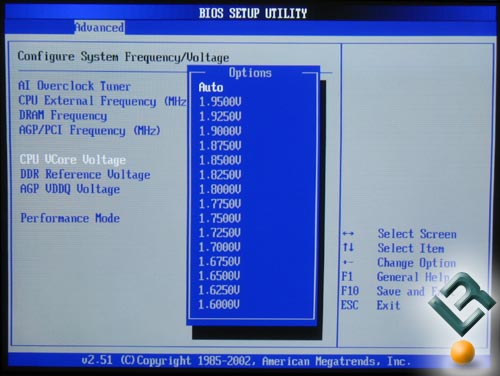
Let’s take a look at the available memory dividers.
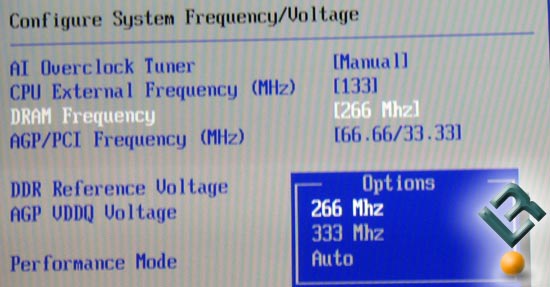
With our Intel 770 set to the default settings (133MHz External Frequency then quad pumped to 533MHz FSB) we found that we only had DDR 266 and DDR 333 options. Not what any overclocker wants to see by any means as 266MHz is a 1:1 divider and the 333MHz option is only a 2:3 divider. Unhappy with the memory dividers in the BIOS, I came across something by accident that can be seen below.
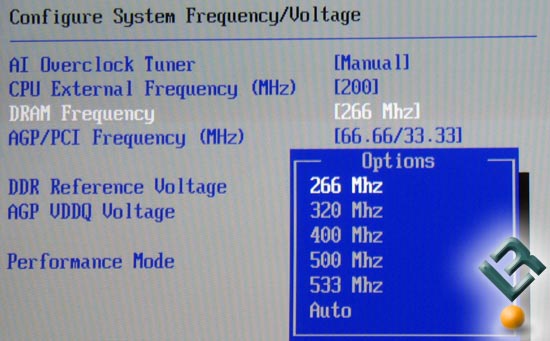
I kept all the other options the same and raised the CPU External Frequency up to 200MHz. I went back down to the DRAM Frequency and noticed many more dividers magically appear. The only down side is that they only are optional from 200MHz to 400Mhz, which is far beyond any Pentium M processor i have ever seen handle. How you can overclock this board then one might be thinking.
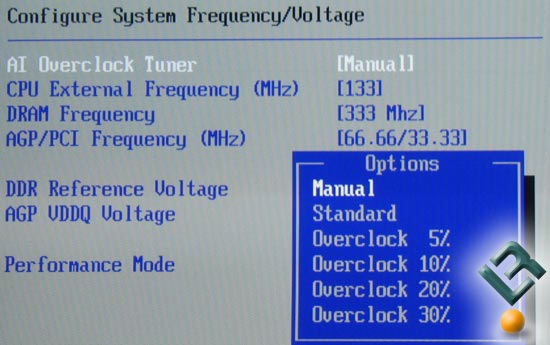
Luckily, ASUS left their AI Overclock Tuner functional and it offers overclocking in 5, 10, 20, and 30% increments over default speeds. When one of these options is selected the BIOS automatically bumps up the voltage. We were able to run the 20% overclocking option and it automatically bumped up the vCore from 1.36V to 1.44V.
Now that we’ve looked at the kit, installation, and the BIOS we can move right along to performance numbers.

Comments are closed.